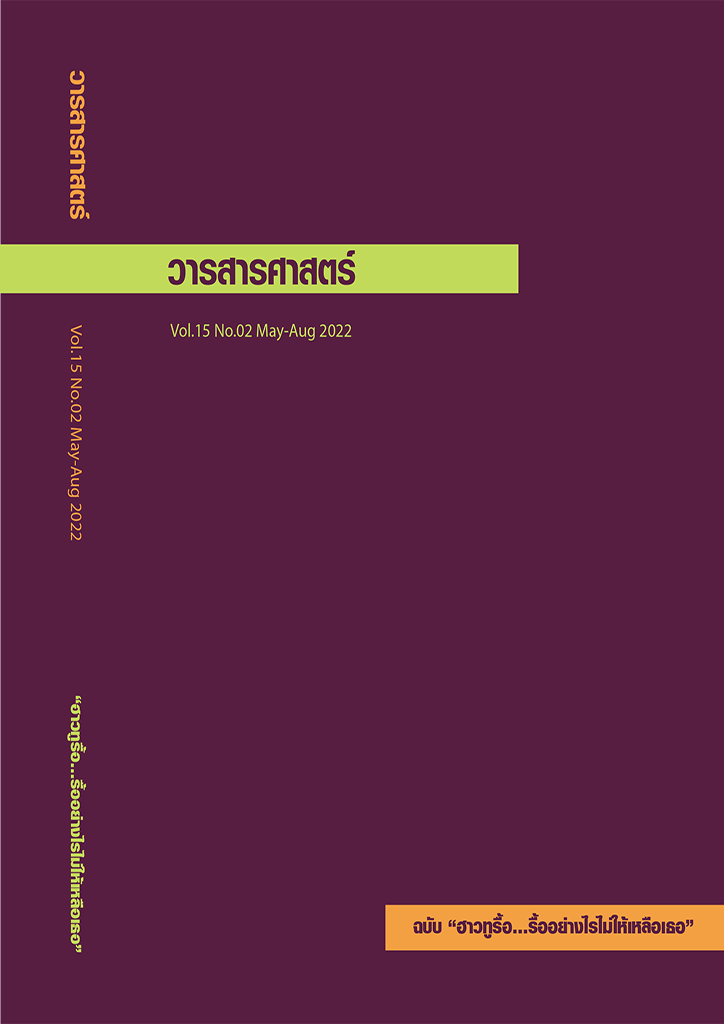Facebook and Twitter Usage in Forming the Bad Student Group to Demand Education Reform in 2020
Keywords:
online public spaces, new social movements, Facebook, Twitter, Bad studentAbstract
The objective of this article is to study how the “Bad Student Group” communicates in online public spaces of Facebook and Twitter; and to study new social movements of the “Bad Student Group”. The data was collected using in-depth interviews with 11samples; Bad Student Group founders, students who follow Bad Student Group on social media, students who do not follow Bad Student Group on social media, political specialist, education specialist, communication specialists and secondary school directors. And using textual analysis focus on messages posted on Facebook and Twitter about education reform in Thailand from 6 June to 31 December 2020. There were the social movements on social media on this selected period.
The results revealed as follows. (1) Facebook and Twitter of the “Bad Student Group” is the online public space according to Habermas’s concept. However, the “Bad Student Group” communicates in their public space with different levels in each feature. (2) the “Bad Student Group” uses Facebook and Twitter as the online public spaces to create new social movements about education reform in Thailand. However, there are differences in the level of their movements; sometimes happened in the online space and sometimes in physical space.
References
กาญจนา แก้วเทพ และคณะ (2543), มองสื่อใหม่ มองสังคมใหม่, กรุงเทพฯ: เอดิสัน เพรส โพรดักส์.
กาญจนา แก้วเทพ และสมสุข หินวิมาน (2560), สายธารแห่งนักคิดทฤษฎีเศรษฐศาสตร์การเมืองกับสื่อสารศึกษา, มหาสารคาม: อินทนิล
ชวิตรา ตันติมาลา (2561), “พื้นที่สาธารณะและการผลิตพื้นที่: ความหมายใหม่ของความสัมพันธ์ทางสังคม”, วารสารบรรณศาสตร์ มศว., 10(1): 92-103.
ชัยนัท สุขไชชยะ (2562), “การสื่อสารทางการเมืองไทยผ่านสื่อสังคมออนไลน์ กรณีศึกษาเฟซบุ๊กเพจ SUTHEP THAUGSUBAN (สุเทพ เทือกสุบรรณ) ช่วงเวลา 31ตุลาคม 2556 ถึง22พฤษภาคม 2557”, วารสาร มมร. วิชาการล้านนา, 8(1): 32-39.
ธนพันธ์ ไล่ประกอบทรัพย์ (2559), “แนวคิดหลังวัตถุนิยม (Post-Materialism) และการมีส่วนร่วมทางการเมือง: กรณีศึกษาโพสท์แมททีเรียลลิสต์ในประเทศในทวีปเอเชีย ปี ค.ศ. 1981 ถึง 2004”, วารสารสงขลานครินทร์ ฉบับสังคมศาสตร์และมนุษยศาสตร์, 2(4): 124-125.
พิชิต วิจิตรบุญยรักษ์ (2554), “HTML: ภาษาเขียนเว็บ”, วารสารนักบริหาร มหาวิทยาลัยกรุงเทพ, 31(3): 199-202.
วุฒิพล วุฒิวรพงศ์ และกิ่งกาญจน์ จงสุขไกล (2562), “พัฒนาการของช่องทางในการแสดงออกทางการเมืองในสื่อออนไลน์ ช่วง พ.ศ. 2557-2560”, วารสารด้านการบริหารรัฐกิจและการเมือง, 8(3): 147-167.
สุวิดา ธรรมมณีวงศ์ (2544), “การเคลื่อนไหวทางสังคม”, วารสารอักษรศาสตร์ มหาวิทยาลัยศิลปากร, 23(2): 32-54.
Buechler, S. (1995), “New Social Movement Theories”, Sociological Quarterly, 36(3): 441-464.
เดือนเพ็ญ จุ้ยประชา (2563), “’ช่วยกันดันแฮชแท็กให้ขึ้นเทรนด์เถอะ’ คนรุ่นใหม่กับการขับเคลื่อนสังคมด้วย #ทวิตเตอร์”,สืบค้นเมื่อ 1 กรกฎาคม 2564 จาก https://adaymagazine.com/thai-twitter-movement-report/
เบญจพร ศรีดี (2563), “คุยกับ ‘มิน’ เยาวชนวัย 17 ปี ผู้ก่อตั้งกลุ่ม ‘นักเรียนเลว’ กิจกรรมมาจากเงิน ‘ค่าขนม’”, มติชนสุดสัปดาห์, สืบค้นเมื่อ 1 กรกฎาคม 2564 จาก https://www.matichonweekly.com/column/article_345406
ประเสริฐ ตันสกุล (2563), “การปฏิรูปการศึกษา การศึกษายุค 4.0”, สืบค้นเมื่อ 1 กรกฎาคม 2564 จาก https://www.matichon.co.th/columnists/news_451872
ภาณุภัทร จิตเที่ยง (2563), “เหรียญสองด้านของขบวนการเคลื่อนไหวทางสังคม เจาะลึก Social”, สืบค้นเมื่อ 1 กรกฎาคม 2564 จาก https://thematter.co/social/two-side-of-social-movement/41000
สำนักงานราชบัณฑิตยสภา (2554), “สื่อสังคม”, สืบค้นเมื่อ 1 กรกฎาคม 2564 จาก http://legacy.orst.go.th/








